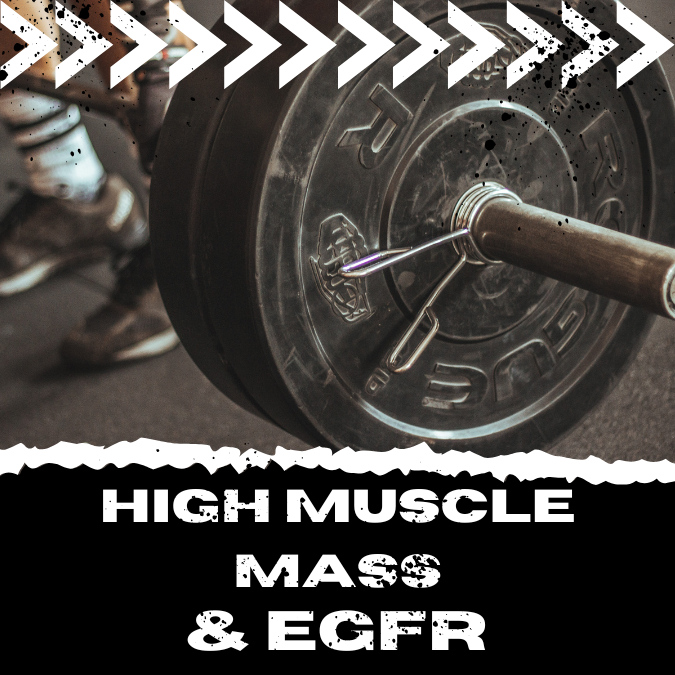This is part of my Low eGFR in Athletes series. A series exploring factors related to low eGFR findings in Athletes.
Today’s topic is exploring why athletes might have a higher risk of kidney injury and lower than expected eGFR.
If you need a bit more background on creatinine and muscle mass, check out my previous post here.
What factors, specific to athletes, impact creatinine values?
Creatinine is known to have several limitations for the general population for estimating kidney function. But there are several factors unique to athletes that may impact creatinine values. These include:
- Muscle mass (which is likely higher than the general population)
- Muscle metabolism (muscle breakdown after exercising)
- The potential use of exercise enhancing supplements (such as protein powders or creatine)
- Hydration (especially after exercise or heat exposure, depending on the sport)
What effect does exercise have on kidney function?
For the general population, engaging in activity, physical activity is associated with health benefits, such as improvements in blood pressure and cardiovascular health, which benefit kidney function. However in high level athletes, where training goes above and beyond the general population, exercise may impact kidney function differently.
According to Machado et al, studies have reported that strenuous exercise has been associated with rhabdomyolysis, and that serum creatinine has been found to be higher after ultramarathons.
What is rhabdomyolysis?
As explained by Divine et al in their 2020 article, rhabdomyolysis (rhabdo) can occur as a result of damage to the skeletal muscle. Intense exercise stimulates release of myoglobin from exercise-damaged muscles. The filtration of myoglobin through the kidney has the potential to initiate the pathophysiological process associated with rhabdo.
The classical clinical triad of rhabdo is:
- Myalgias (muscle pain)
- Generalized weakness, muscle stiffness and tenderness
- Hallmark sign of ice-tea coloured urine
Ice-tea coloured urine indicates a decrease in urine output and may be associated with an acute kidney injury (AKI). Rhabdo is thought to cause between 5-20% of all adult AKI cases.
What increases the risk of rhabdo for athletes?
Divine at al, summarize the risk factors for rhabdo specific to athletes as:
- Exercise in excess of capabilities
- High absolute and relative exercise intensity
- Inadequate rest (high work to rest ratio)
- High percentage of eccentric muscle contraction
- Exercising in hot and humid environments
- Dehydration
- History of heat exhaustion
How much does dehydration influence creatinine changes in athletes?
Divine et al studied changes in creatinine and markers of muscle muscle damage among 23 football athletes who participated in pre-season training. As part of the standard training protocols athletes weight was measured daily and fluid recommendations were provided to players who experienced a one-day weight changes above 3%. Blood samples were taken at baseline and again after day 5 and 10 of the pre-season training.
As you can see from the table below, despite strict protocols to maintain hydration, creatinine (shown as CR on the table) and the resulting eGFR calculation changed through-out the 10 day training period.

So does that mean that these athletes had a kidney injury?
The authors point out that while 10 out of 23 athletes had a significant reduction in their eGFR and would have been considered at risk for an AKI, no players had an AKI or rhabdomyolysis. But, everyone’s eGFR returned to baseline after the training camp.
Take Aways
When athletes train intensively they likely experience some degree of muscle breakdown. This muscle breakdown can be associated with significant changes in circulating creatinine values. Given that creatinine is used to estimate GFR, if a GFR is calculated when the creatinine is high, the kidney function will look low.
In these cases, testing creatinine values again after the intense training period is over may be important to help understand if these values are true reflections of kidney function or simply a reflection of the training.




One thought on “Why are athletes at risk of kidney injury?”